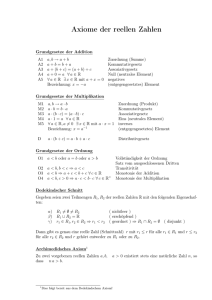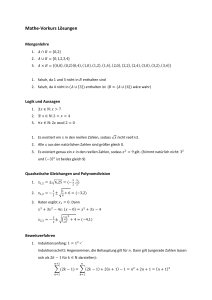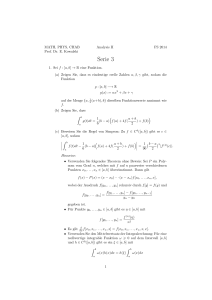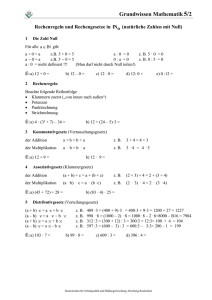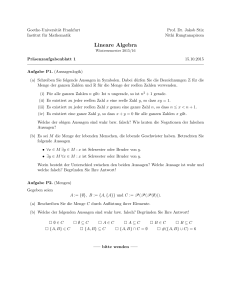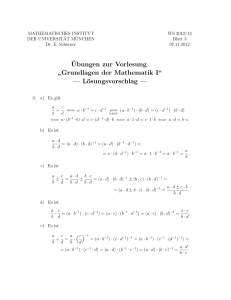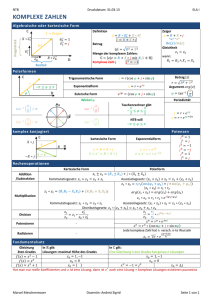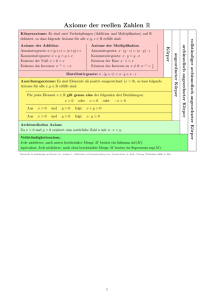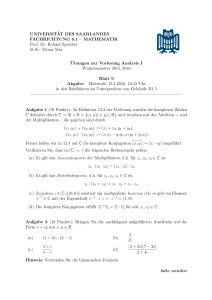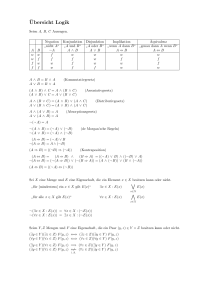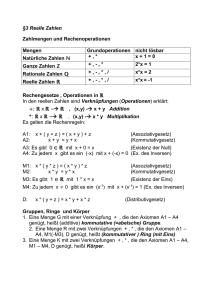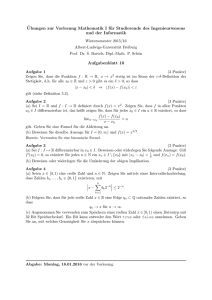Axiomensystem von reellen Zahlen
Werbung
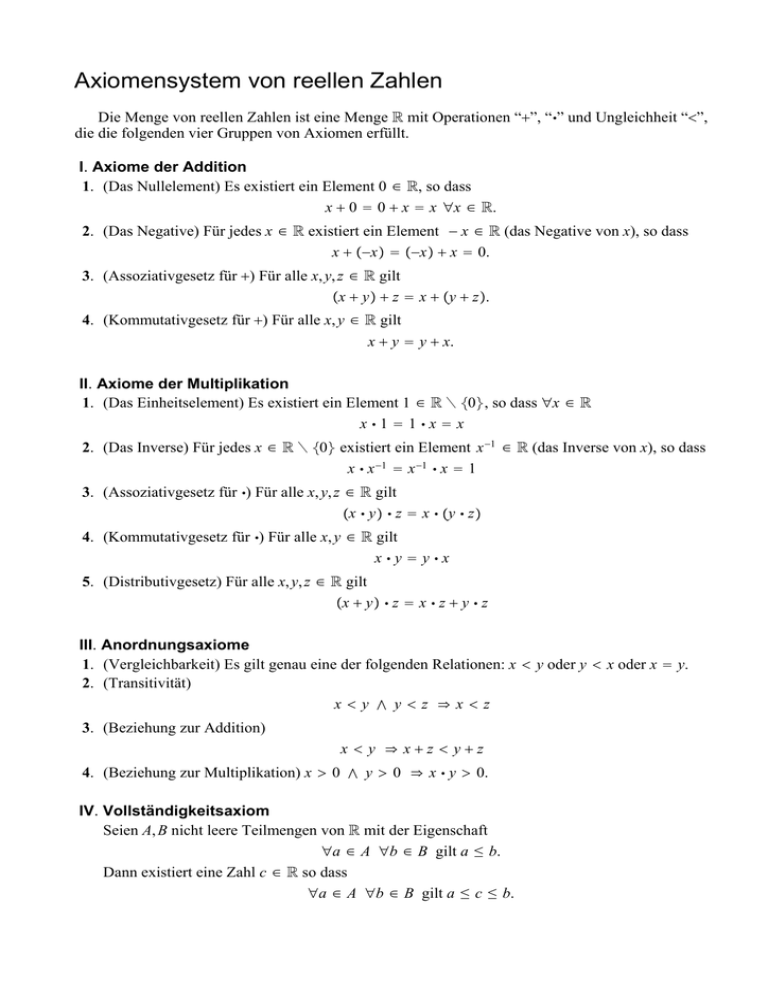
Axiomensystem von reellen Zahlen Die Menge von reellen Zahlen ist eine Menge R mit Operationen “”, “” und Ungleichheit “”, die die folgenden vier Gruppen von Axiomen erfüllt. I. Axiome der Addition 1. (Das Nullelement) Es existiert ein Element 0 ∈ R, so dass x 0 0 x x ∀x ∈ R. 2. (Das Negative) Für jedes x ∈ R existiert ein Element − x ∈ R (das Negative von x), so dass x −x −x x 0. 3. (Assoziativgesetz für ) Für alle x, y, z ∈ R gilt x y z x y z. 4. (Kommutativgesetz für ) Für alle x, y ∈ R gilt x y y x. II. Axiome der Multiplikation 1. (Das Einheitselement) Es existiert ein Element 1 ∈ R ∖ 0, so dass ∀x ∈ R x1 1x x 2. (Das Inverse) Für jedes x ∈ R ∖ 0 existiert ein Element x −1 ∈ R (das Inverse von x), so dass x x −1 x −1 x 1 3. (Assoziativgesetz für ) Für alle x, y, z ∈ R gilt x y z x y z 4. (Kommutativgesetz für ) Für alle x, y ∈ R gilt xy yx 5. (Distributivgesetz) Für alle x, y, z ∈ R gilt x y z x z y z III. Anordnungsaxiome 1. (Vergleichbarkeit) Es gilt genau eine der folgenden Relationen: x y oder y x oder x y. 2. (Transitivität) xy ∧ yz xz 3. (Beziehung zur Addition) x y xz yz 4. (Beziehung zur Multiplikation) x 0 ∧ y 0 x y 0. IV. Vollständigkeitsaxiom Seien A, B nicht leere Teilmengen von R mit der Eigenschaft ∀a ∈ A ∀b ∈ B gilt a ≤ b. Dann existiert eine Zahl c ∈ R so dass ∀a ∈ A ∀b ∈ B gilt a ≤ c ≤ b.
